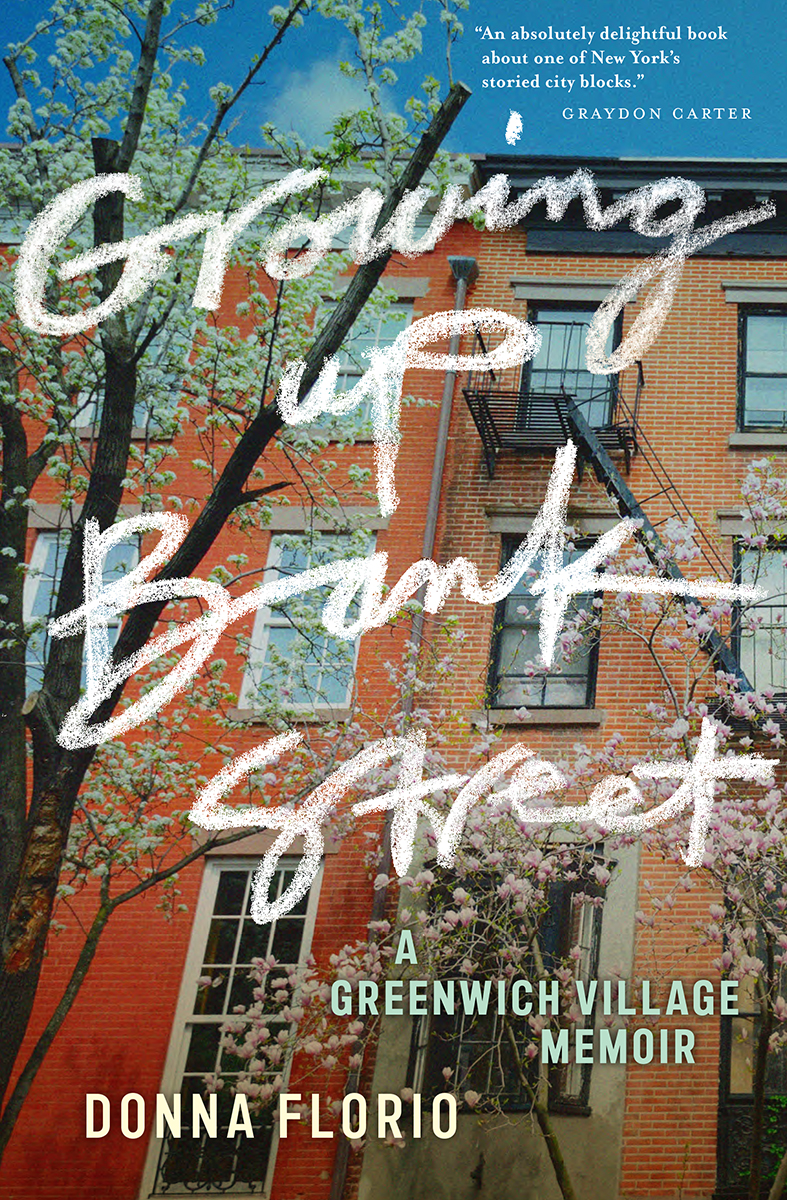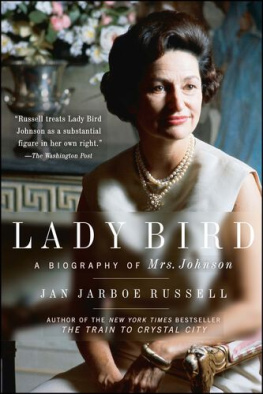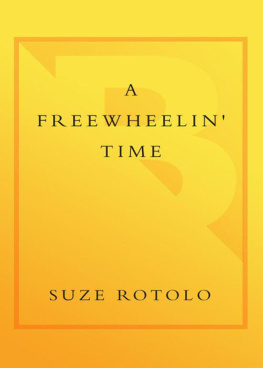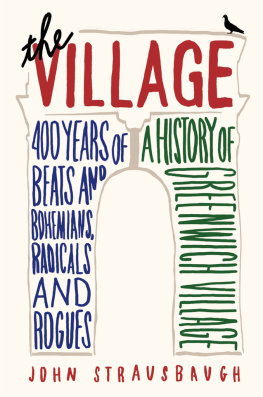
Growing Up Bank Street
Growing Up Bank Street
A Greenwich Village Memoir
Donna Florio

Washington Mews Books
An Imprint of New York University Press New York
Washington Mews Books
An Imprint of New York University Press
New York
www.nyupress.org
2021 by New York University
All rights reserved
Book designed and typeset by Charles B. Hames
References to Internet websites (URLs) were accurate at the time of writing. Neither the author nor New York University Press is responsible for URLs that may have expired or changed since the manuscript was prepared.
Some names have been changed to protect the privacy of individuals.
Cataloging in Publication data is available from the publisher
Cloth ISBN : 9781479803200
Consumer ebook ISBN : 9781479803231
Library ebook ISBN : 9781479803224
New York University Press books are printed on acid-free paper, and their binding materials are chosen for strength and durability. We strive to use environmentally responsible suppliers and materials to the greatest extent possible in publishing our books.
Manufactured in the United States of America
10 9 8 7 6 5 4 3 2 1
Also available as an ebook
This book is dedicated to the neighbors on every Bank Street in the world who open their hearts to each other.
Contents
Illustrations follow Chapter 14
Constance Rosenblum
When we think of the modern American city, at least these days, we typically think of a cold and soulless place, one defined by gleaming towers inhabited by people with unfathomable amounts of money. And these structures can be found not just in the United States. They are quickly transforming the skylines of iconic urban centers such as London and are sprouting like the proverbial weeds throughout Asiain cities like Dubai, Shanghai, Seoul, and Beijing, home of some of the worlds tallest buildings.
Cities defined by these towers are increasingly becoming the norm, both here and around the world. But there once existed a different kind of city, at least in America, one characterized by low or at least not-so-mammoth residential buildings, along with intimate and often idiosyncratic shops and businesses. Perhaps most important, this city was populated by neighbors who werent necessarily your best friends but were nonetheless people with whom you could exchange a friendly wave or a little chitchat on a doorstep.
This is the city beloved by the sainted urbanist Jane Jacobs. Its contours can still be found in a few places, such as Brooklyn Heights, a landmarked neighborhood of brownstones overlooking the spectacular Lower Manhattan skyline. And one of its most powerful expressions is the exquisite, intimate Bank Street, a six-block strip in Manhattans Greenwich Village defined by historic townhouses and adorned with trees and cobblestones. Perhaps most important, Bank Street had an intimacy that made it possible to have acquaintances and even friends in nearly every nook and cranny. This is the world that Donna Florio brings to life in this book.
Donna grew up on Bank Street and has lived there for more than half a century. For much of that time she has been amassing memories, in the form of conversations, oral histories, and deep dives into libraries and other places of research, in an effort to chart and capture the heartbeat of this remarkable place.
I first met Donna in 2014, when I interviewed her in connection with an article that was published in the Real Estate section of The New York Times. Over the past few years Ive watched her book take shape and grow to its present form, an endearing portrait of a singular place, peopled by a captivating and sometimes heartbreaking assortment of characters, nearly all of whom helped Donna become the person she is today.
Even more important, the book is a reminder of the way cities used to be, a reminder of the closeness and camaraderie they used to offer, the spiritual nourishment they used to provide. This is not to romanticize the city of the past. Even the best of them suffered from a depressing assortment of urban illscrime, poverty, and dysfunction, just to name a few. But despite their limitations there is a reason they have proved so attractive over the centuries: they fulfill basic human needs.
In many respects, Growing Up Bank Street is a portrait of a lost worldmy lost city, as F. Scott Fitzgerald described the golden metropolis that existed before the Great Crash of 1929 turned so much to dust. In that respect the book is a moving reminder of what has been lost and can never be found again. At the same time, its a vivid, often hilarious, sometimes heartbreaking, but always beautifully rendered portrait of an unforgettable place at unforgettable times in its history.
This is not to say that Bank Street has remained untouched by market and social forces over the years. Apartments that when Donna was growing up were affordable even for fledgling writers and artists now can be had only for sky-high sums. At the rate things are going, we wont see its like again. But thanks to Donnas lapidary re-creation, we can lift the curtain that divides us from the past and briefly revisit a memorable place at a memorable moment in its history.
Six Blocks of America
Mosquitoes and Alexander Hamiltons bank started the whole thing.
A lady scrambles across her muddy lane as wagonloads of panicked colonists from downtown crash by. She glares at the new Bank of New York mansion, an unwanted intruder in the peaceful woods of her sleepy 1798 Greenwich Village. That bank started it, she huffs. They want to escape their yellow fever quarantine, and now we have all the dirty downtowners moving here, bringing the disease to us.
A 1920s scientist strides towards his laboratory near the Hudson River, seeing nothing around him, his mind on his new idea for talking pictures. He passes John Dos Passos, sitting on the steps of his boardinghouse at 11 Bank Street. Dos Passoss new novel, Manhattan Transfer, is attracting attention. Young socialite Marion Tanner, decades from stardom as Auntie Mame, hurries to the bootlegger across the street. She needs gin for the salons she holds in her elegant new brownstone.
In the 1930s, everyone broke because of the Great Depression, the poet Langston Hughes climbs the steps to his 23 Bank Street illustrators studio carrying his latest work. A block down, young John Kemmerer, an aspiring writer from Iowa, admires the pear trees and cityscape from the roof of his new building at 63 Bank Street. Three stories below John, the Swansons practice the tango for their vaudeville act at the Paramount Theater. Above the Swansons, Alice Zecher, newly arrived from California, winks at herself as she applies a bit of rouge for a job interview. Her plan is to be a secretary by day and a Village bohemian by night.
In 1942, a leader of the American Communist Party climbs the steps to his place at 63 Bank as FBI agents eye him from the Swansons windows.
In the 1950s, Tish Touchette, a female impersonator with a popular nightclub act, hangs his sequined gowns in his new place at 51 Bank and takes his poodle for a walk. He passes the actor Jack Gilford from number 75. Jack, blacklisted by the House Un-American Activities Committee, the government agency that implemented the Red Scare tactics of Senator Joseph McCarthy, is desperate to line up a jobany job.
Next page








